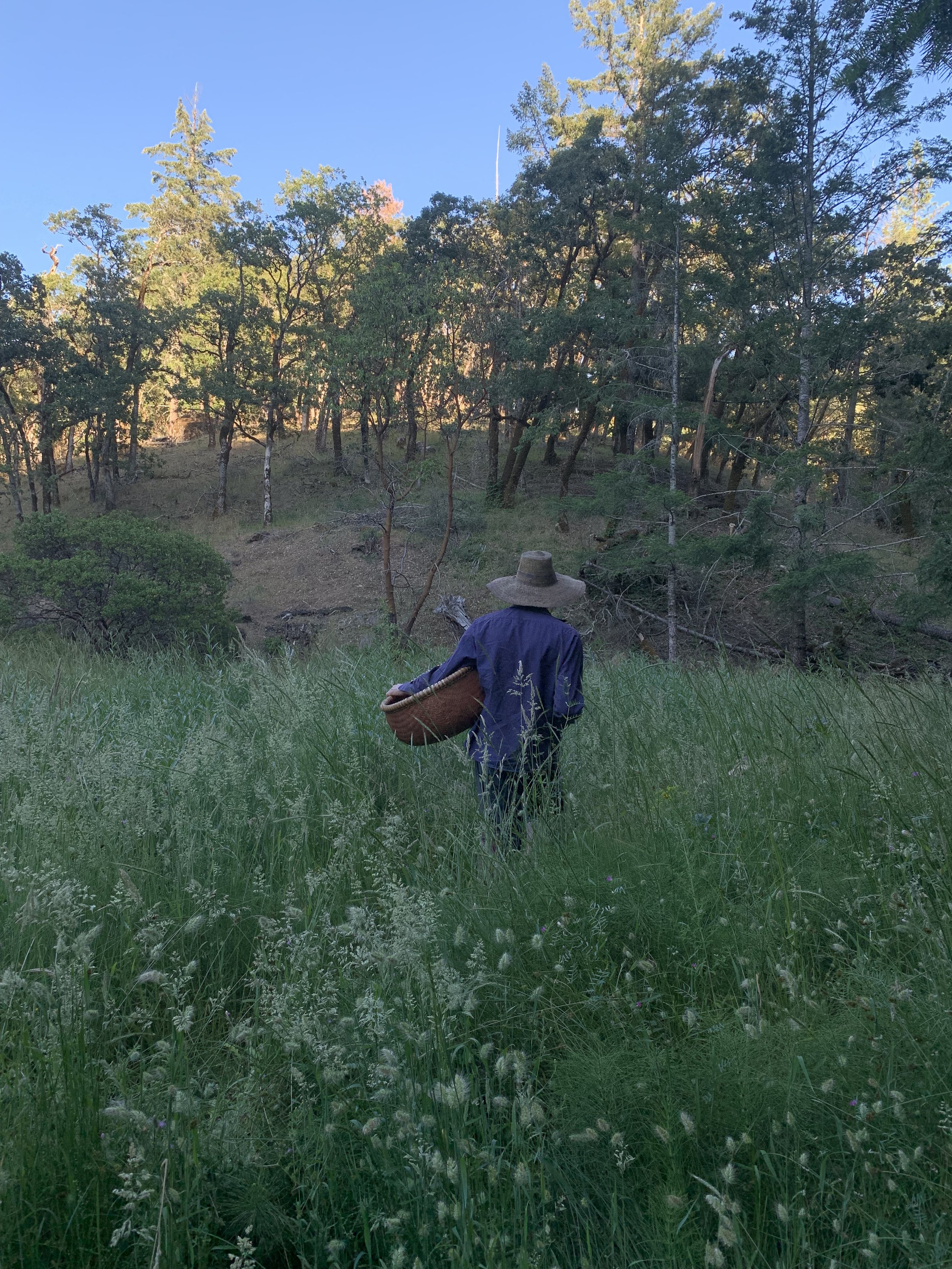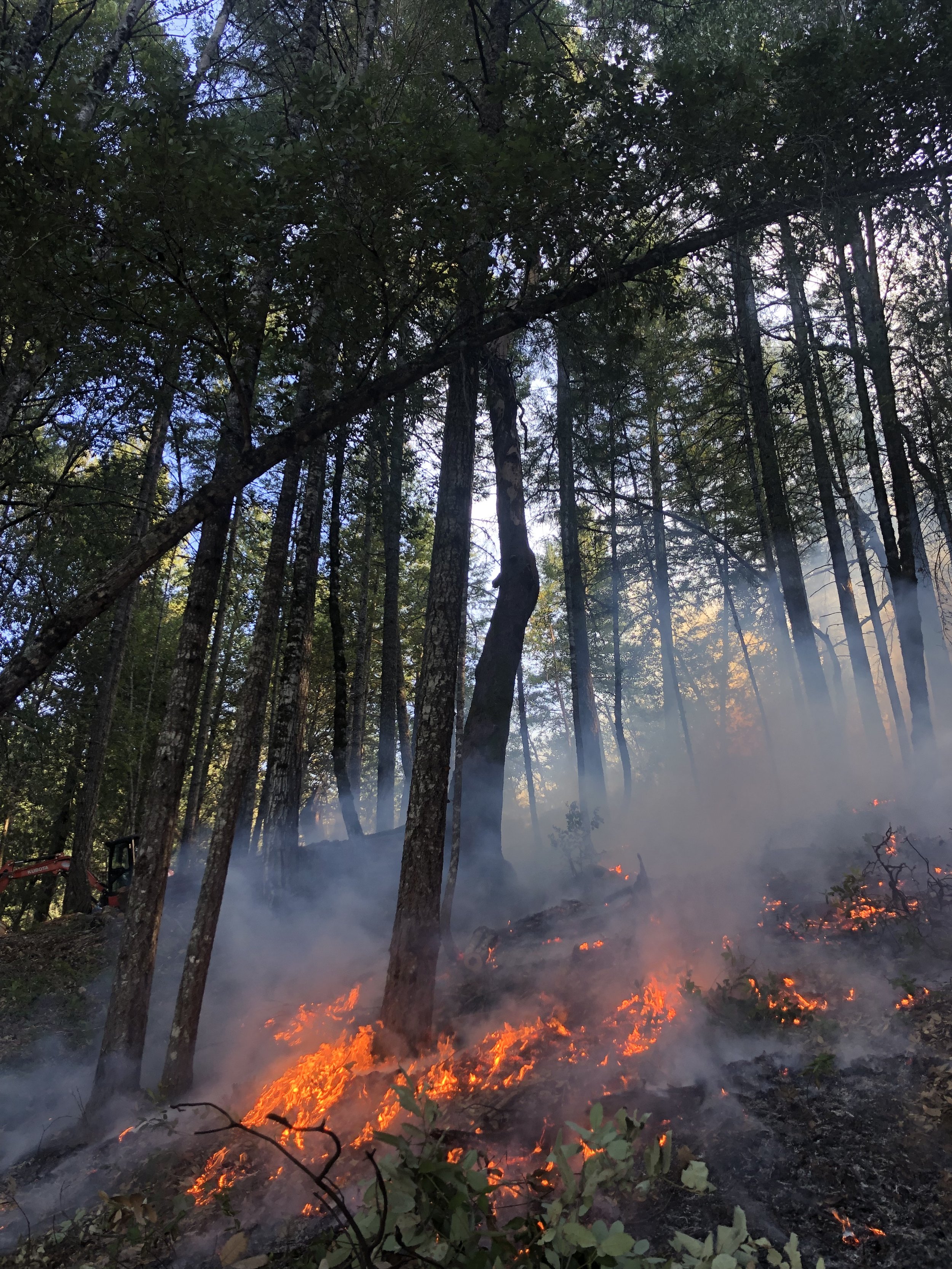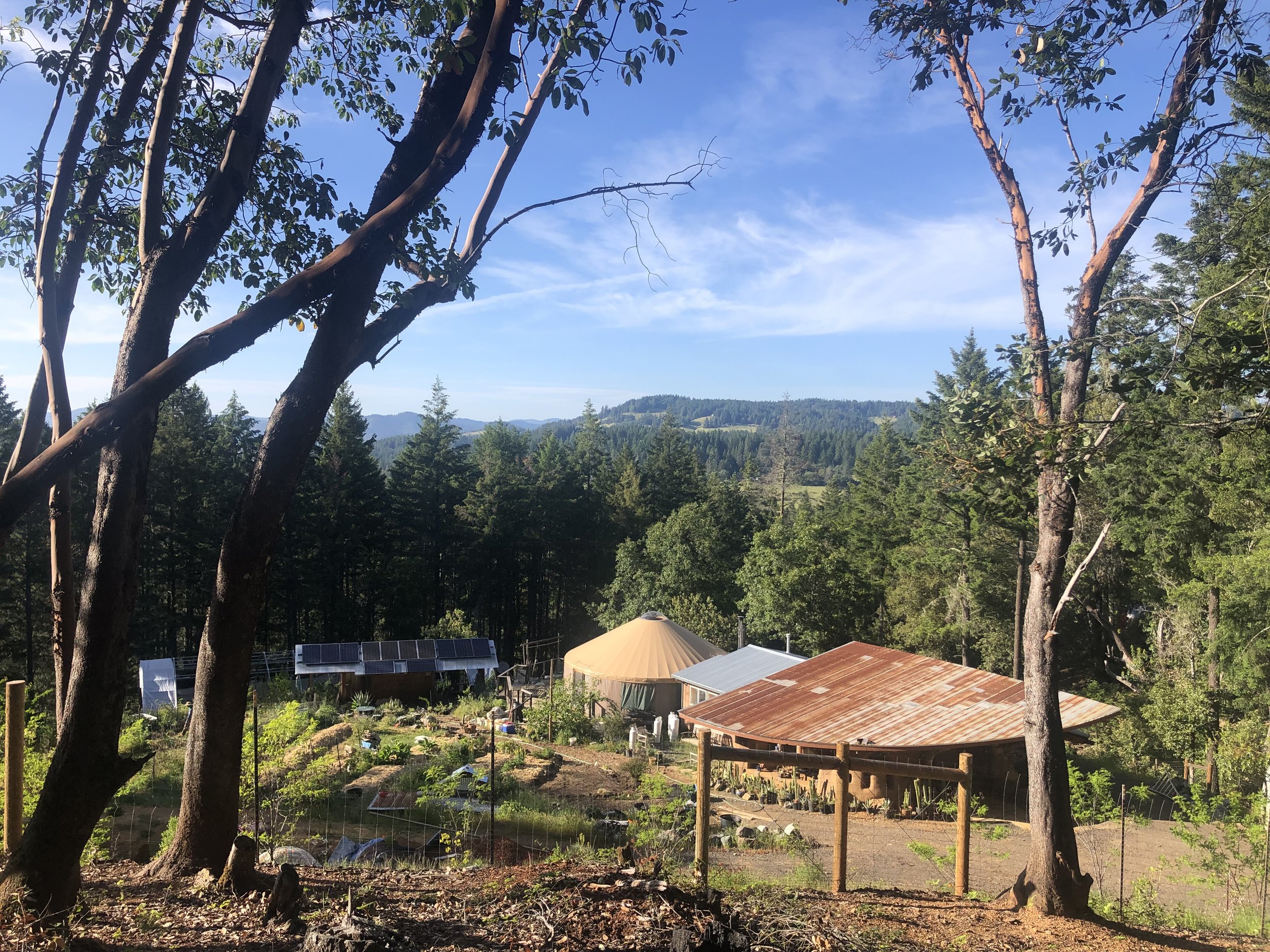
Wanosh Land Projects Include Forest Gardening, Watershed Regeneration, and Fire on the Land.
Forest Gardening
Wanosh Forest Gardens is located in Pomo Territory, within a second and third-growth mixed conifer and oak woodland forest with a his/herstory of over-harvesting and grazing.
We see ourselves as a part of the forest and guiding ourselves back to optimum health. The journey of connecting the inner ecosystem to the pathways of the exterior ecosystems is a process linked with the very fabric of what it means to heal, to be human, and to be nature.
Our first agreement is to continually link the interior and exterior landscape. Through practices of quieting ourselves, we observe and read the landscape, and design based on a reciprocal relationship with the ecosystem that nurtures us. This design reflects observed use patterns by all the sentient beings that live here; and by the resources that are stationary or move through the landscape.
WHAT IS optimum health in a time when all our references to local climax systems have been altered?
WHAT IS optimum health when new species, humans, and domestic farm animals have settled into the ecosystem matrix?
How does the optimum health of an individual relate to the health of the collective and where we live?
The three main relationships that define our relational patterning are:
1) intensive housing and gardens (zone 1-3),
2) the forest (zone 5),
3) the transitional edges between them aka the Veld (zone 3 and 4).
We are actively examining our design to maintain wildlife corridors through and around the property, with respect to the movement of the winged and four-legged relations that we coexist with.
In an effort to tend the wild in the absence of fire, we have introduced goats to help us clear and re-mineralize the forest soils. With goats as the primary leaders in a grazing plan we significantly reduce the use of fossil fuels (and our backs).
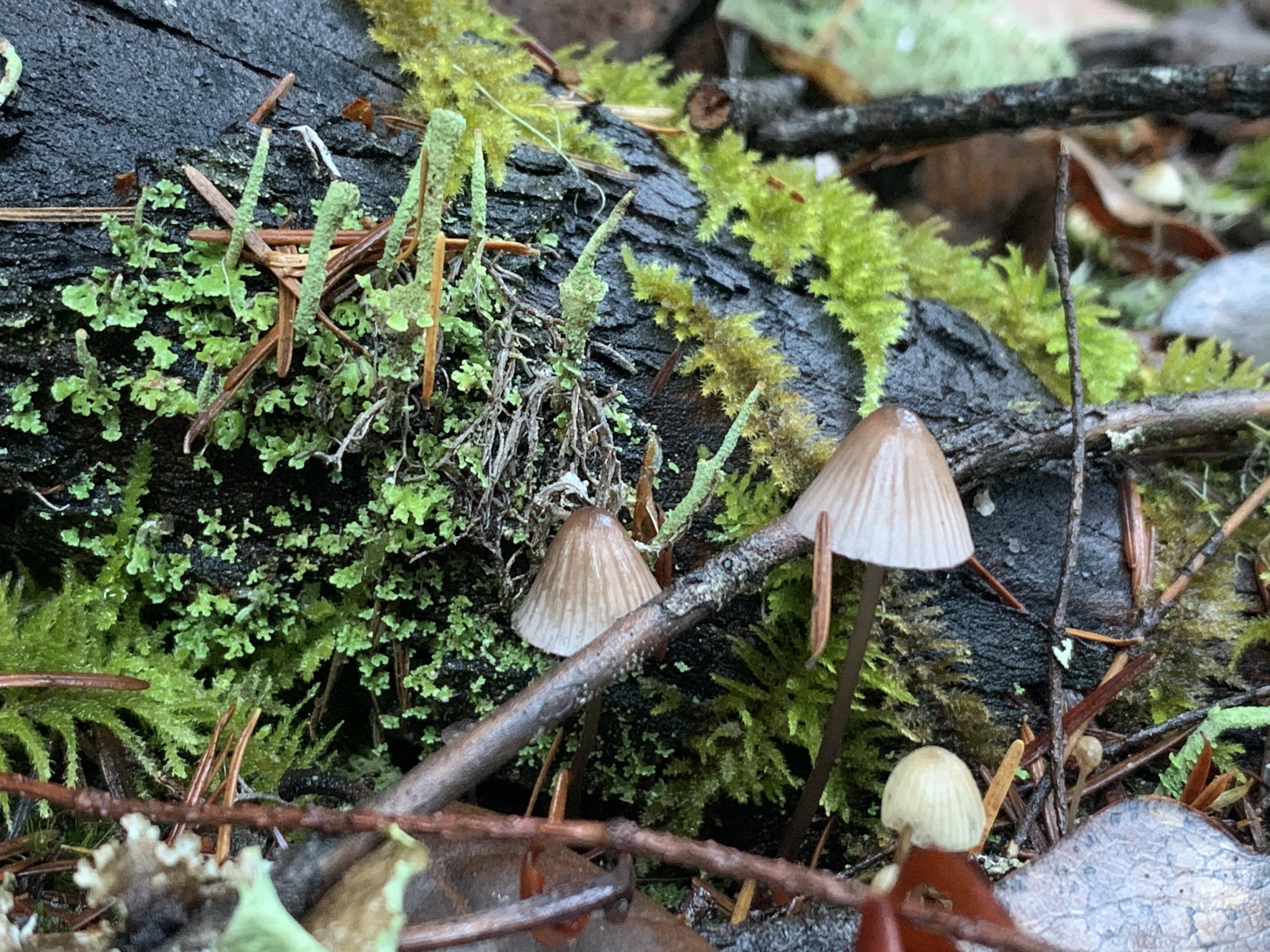
Our Lives Depend on Forests
The forest is our Elder, Teacher, Friend, and Lover.
Watershed Regeneration
Water is the guiding elder, the foundation of our action plan.
Three seasonal draws run their course through Wanosh Forest Gardens. By working on and around contours to slow and move water into catchment, sinks, and fertility pockets we begin to recharge the aquifer. We use pattern design to direct water into the soil for aquifer recharge; aiming to make seasonal creeks run longer, support existing springs and wells become more abundant, and create new ones, lower in the watershed, that may not have existed prior.
We live intimately with the watershed we are a part of.
For now, we focus on creating an epicenter and model for others to connect with when they are ready. This work primarily expresses itself in the form of passive swales built on and slightly off contour and prescribed burning. The passive swales are made with brush gleaned from fire clearing. This then breaks down while catching new forest materials and becomes a sponge to slowly sink water into the ground. In places where it is applicable, we bury thinning slash to create moisture and fertility pockets.
These practices are a dance between the elements and available resources. We approach the land with the idea of stacking as many functions as possible to maximize our efficiency. At this point we are aiming to burn units that stack as paddocks to run the goats through and build trails for access, all in relation to the way water flows.
As part of the mop-up after fire, un-burnt materials are used for berming, hugelkultur, Biochar and creek restoration.
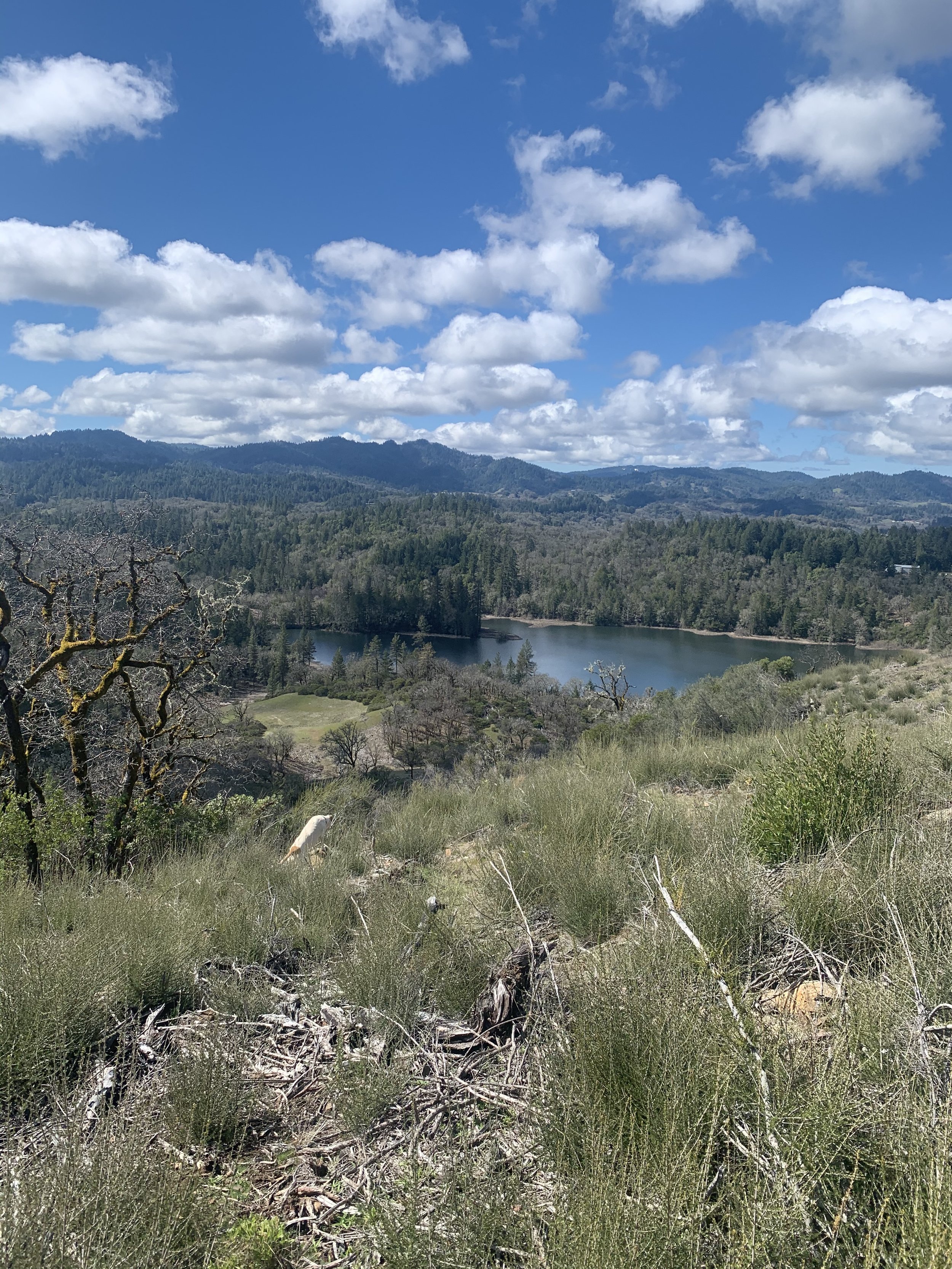
The Watershed depends on Fire.
Water and Fire are our elemental allies.
Fire Regeneration
Fire was the original forest management tool in California.
We are grateful to be in reunion with the missing element of fire.
The use of fire selects for certain species’ survival while re-mineralizing the soil, for both perennialized native and opportunistic species of mixed-use. Today, we can still see remnants of when fire was the primary tool used by the elders beneath the storyline left for us by the logging industry. Four-legged and winged ones were the assistant managers.
Today we prepare for fire by doing some of its work, thus in the right circumstances, we chaperone low-intensity understory fire through the homelands. When good fire season is over, goats and other domestic animals mob graze in a leader/follow methodology. Simultaneously, humans also assist in fuel reduction with hand saws and chainsaws.
The remnants of logging operations have left the forest dominated by thick stands of Doug fir which tend to crowd out the remaining forest made up primarily of Madrone, Tan Oak, and Quercus spp. After being cleared by our goat friends, human disturbance comes in the form of clearing all dead, damaged, diseased, and deformed specimens.
Doing fire’s job is multifaceted and can never be completely accomplished as seeds lay dormant in the soil waiting for scarification. Doing fires job creates a plethora of resource opportunities that may not otherwise exist: clearing the forest makes material in the form of decaying materials, mulch/compost, mushroom propagation materials, round poles, and mill-able timber available.
The considerations for selection are not taken lightly. They include, but are not limited to:
a) how our disturbance (or lack thereof) effect water; b) identifying standards (species being left to be the oldest standing specimens or groves); c) thinning lumber/timber quality crowding the standards (to be used for on-site natural building); d) thinning unhealthy/compromised trees to be further selected for passive water retention; e) fertility pockets; f) mulch/compost; g) mushroom propagation; h) moisture levels; i) sap levels; and j) nesting birds.


